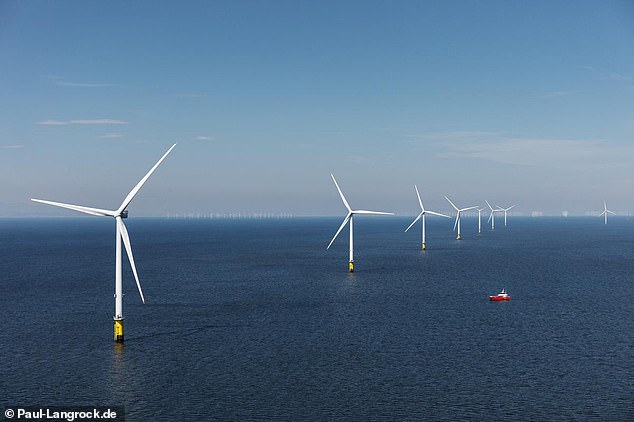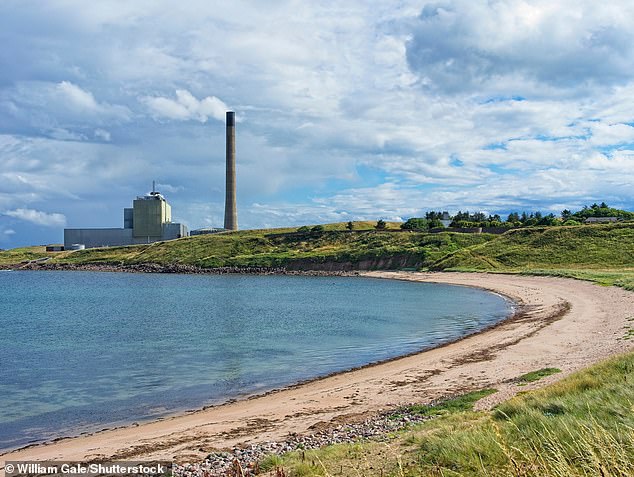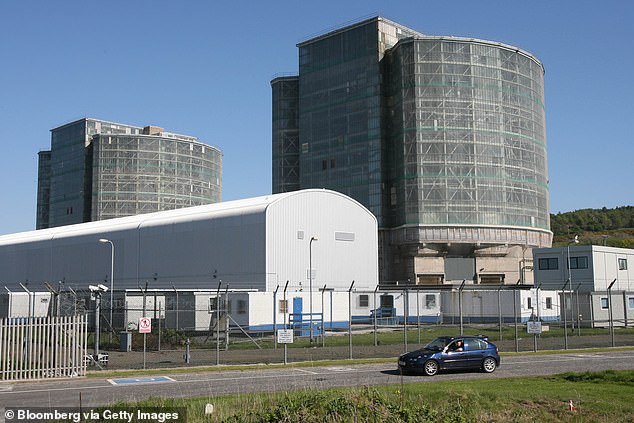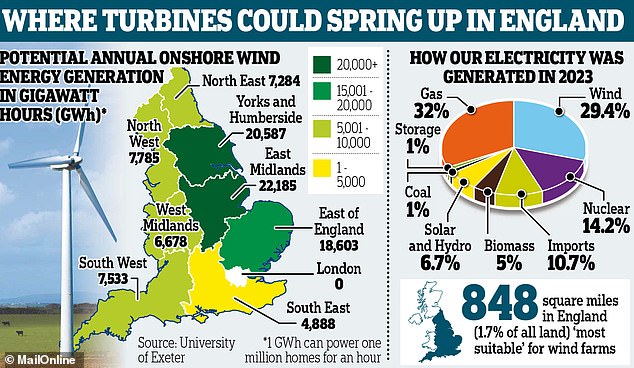UK electric ‘superhighway’ gets green light: ambitious 660km network opening in 2029 will transport clean energy across the UK
A multi-billion pound ‘superhighway’ to carry electricity between Scotland and England has been given the green light.
A 500-kilometre undersea cable, called Eastern Green Link 2, transports clean energy from Peterhead in Aberdeenshire to Drax in North Yorkshire.
Meanwhile, a smaller undersea cable of around 100 miles (160 kilometres) between Torness near Edinburgh and Hawthorn Pit in County Durham is called Eastern Green Link 1.
Construction of both lines is expected to begin within the next 12 months and they will be operational in 2029. However, at least two other lines are planned.
The highly ambitious network will transport clean energy generated by wind turbines to and from UK power stations, when and where it is needed.
Eastern Green Link 2 will transport clean energy from Peterhead in Aberdeenshire to Drax in North Yorkshire, while a shorter line called Eastern Green Link 1 will run from Torness near Edinburgh to Hawthorn Pit in County Durham. A similar line along the west coast, known as Western Link, already transports energy between Hunterston in Scotland and Flintshire Bridge in Wales
Eastern Green Link 2, led by Scottish and Southern Electricity Networks (SSEN), has been given the green light by Ofgem, the UK’s independent energy regulator.
Once completed, it should help the new Labour government deliver on its pledge to achieve a net-zero electricity system by 2030.
A similar line along the west coast, known as the Western Link, already carries energy between Hunterston in Scotland and Flintshire Bridge in North Wales.
“Ofgem is fully committed to supporting the government in achieving its 2030 clean energy targets,” said Jonathan Brearley, CEO of Ofgem.
‘Today’s announcement is a further step in putting in place the regulatory systems and processes to accelerate network regulation and thus achieve its goal.’
At 500 kilometres in length, the Eastern Green Link 2 is the longest subsea cable in the UK and the largest electricity transmission project ever undertaken in the UK.
According to Ofgem, Eastern Green Link 2 would cost at least £4.3 billion to build and would power 2 million homes alone.

Wind turbines harness energy from the wind using mechanical force to turn a generator and create electricity. Pictured: Offshore wind turbines in Liverpool Bay on the west coast of the UK

The 315-mile undersea cable, called Eastern Green Link 2, will transport clean energy from Peterhead in Aberdeenshire (pictured) to Drax in North Yorkshire
The shorter Eastern Green Link 1 (from Torness to Hawthorn Pit) was given the green light by Ofgem just over a year ago.
Two other lines – Eastern Green Link 3 and Eastern Green Link 4 – are still in the early planning stages.
Considering that the cost of Eastern Green Link 2 alone is estimated at £4.3 billion, the entire network could be many billions more expensive.
Ofgem told MailOnline that the ‘provisional’ cost of Eastern Green Link 1 is estimated at £2 billion – making a total of £6.3 billion for 1 and 2.
Each line in the network will be ‘bidirectional’, meaning energy can flow in both directions – just like vehicles on a highway.
However, most of Scotland’s energy is expected to flow south to England, with the northern country ‘sharing’ its large wind energy reserves.

A similar line along the west coast, known as Western Link, already carries power between Hunterston in Scotland and Flintshire Bridge in North Wales. Pictured: Hunterston A Power Station outside Ardrossan, Scotland
In general, Scotland experiences stronger winds that last longer than England.
So the Scottish wind turbines are spinning much faster, which means more electricity is generated.
According to a 2019 report, the wind energy generated by Scotland in the first six months of the year was enough to power the whole of Scotland twice over.
The government is also considering building thousands of extra wind turbines in England as a way to increase the amount of wind energy.
But the ability to transport wind energy from Scotland is an additional measure to ensure that energy is still available in England when winds are moderate.

Thousands of onshore wind turbines could be built across the country, not just in sparsely populated rural areas, under a Labour government-led drive for net zero
Overall, the energy highway should help reduce reliance on energy production methods that rely on “dirty” fossil fuels — particularly gas, oil, and coal — which produce greenhouse gas emissions and global warming.
The UK has made big strides in cutting its use of coal in recent years, but oil and gas – both burned to release their energy – appear harder to shake off.
According to the latest government figures, 39.3 per cent of UK energy consumption comes from gas, 36 per cent from oil and 3 per cent from coal.
According to Carbon Brief, the amount of electricity generated in the UK from fossil fuels fell by 22 per cent compared to the previous year, the lowest level since 1957.
A complete switch to wind power and other renewable energy sources such as solar, biomass and geothermal could ensure the UK does its part to reduce the planet’s overall emissions.
